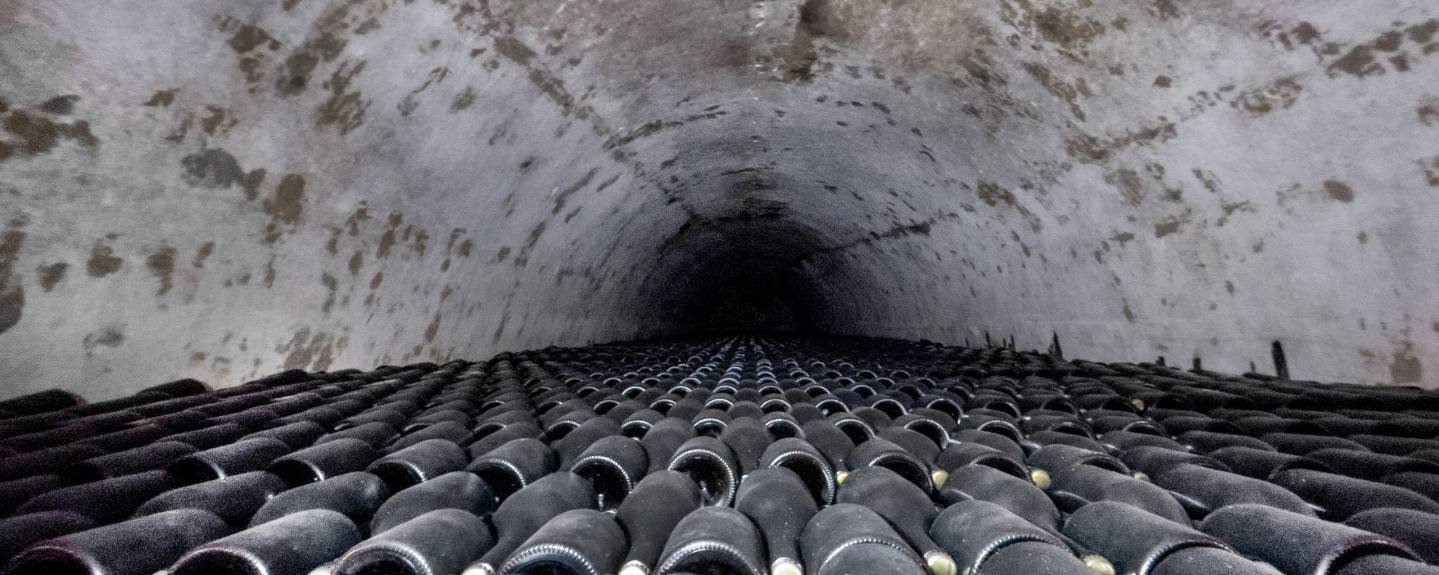
The Champagne Houses
They craft cuvée wines that are an enduring reflection of the house’s signature style
Champagne-making: a profession
The Champagne houses are behind the prestige and reputation enjoyed by Champagne wines today. They craft their Champagne wines themselves using grapes bought from the growers, or using clear, natural base wines, in addition to grapes sourced from their own vines if they have some. They take great care choosing the different crus that will go into blending their cuvées, in line with the house’s signature style and their own designs.
Their age-old expertise is directly tied in with the selection of crus, storing reserve wines and making their cuvées, which they cellar with great care to perpetuate the style of the house.
Today, the Champagne houses are responsible for more than two-thirds of sales and 90% of exports abroad. Their names are often famous around the world. However, fame is not necessarily synonymous with large volumes. Some houses stay extremely confidential, with very limited yields.
Champagne wines with global star appeal
For centuries, the Champagne houses have been travelling the world to spread the word about their beloved beverage. Family histories, tradition and intergenerational knowledge sharing shape the dynasty of some Champagne houses.
Their inspiring stories transcend time thanks to the work of the cellar master who, year on year, crafts an exquisite signature wine by blending wines from different vintages to capture the essence of the house.


Champagne culture
The houses, driving the global reach of Champagne’s prestigious profile
In the late 17th century, Champagne gained increasing popularity with drinkers, especially among the wealthy and the titled. The Champagne houses began to travel the world on marketing trips to raise the profile of their wines. This is how Champagne became famous among aristocratic circles around the world: it symbolises French culture, celebration, the spirit of France – in a nutshell, the highly coveted French way of life.
The houses, driving the global reach of Champagne’s prestigious profile
In the late 17th century, Champagne gained increasing popularity with drinkers, especially among the wealthy and the titled. The Champagne houses began to travel the world on marketing trips to raise the profile of their wines. This is how Champagne became famous among aristocratic circles around the world: it symbolises French culture, celebration, the spirit of France – in a nutshell, the highly coveted French way of life.

The Union des Maisons de Champagne currently brings together 370 houses that make the "Grandes Marques" (most prestigious wines, sometimes in low quantity) from grapes bought from growers.
Committed to defending the Champagne heritage!
The Champagne houses are wholeheartedly dedicated to defending their designation and their vineyards, and work daily to sustain and improve practices in Champagne. They are particularly advancing sustainable development, by working hand-in-hand with the growers to develop vine-growing and wine-making techniques in keeping with environmental standards.
Back in 1882, the Champagne houses founded the Syndicat du commerce des vins de Champagne, which has since become the Union des Maisons de Champagne (UMC).
Right from the outset, the UMC went to great lengths to stop producers from other regions using the "Champagne" name and to help the Champagne houses to unite in their collective fight against the destruction wrought by the phylloxera insect pest and to work together with the growers.
Since 1941, both of these duties – defending the designation and improving vineyard and winery techniques – have been continued by the growers and Champagne houses themselves, within the Comité Champagne. A common venue for holding discussions, sharing values and cooperating, this joint trade association places both groups of stakeholders on an equal footing for the good of the whole industry. In a way, it set a pioneering example in terms of fair trade.

Open to visitors!
Visitors are more than welcome at our Champagne houses, so why not seize the opportunity to discover the secrets of how Champagne is made and see the majestic Champagne cellars first-hand!
